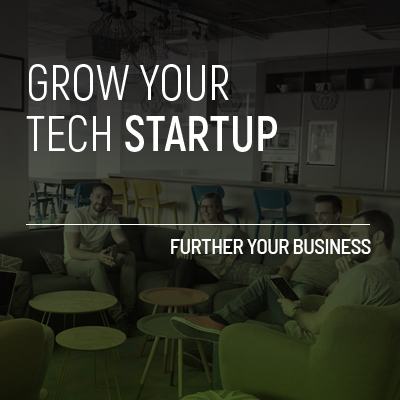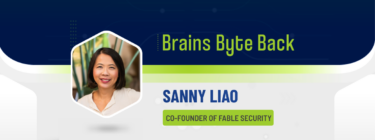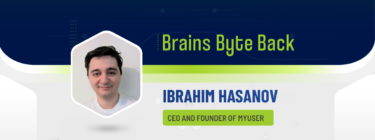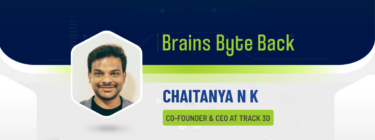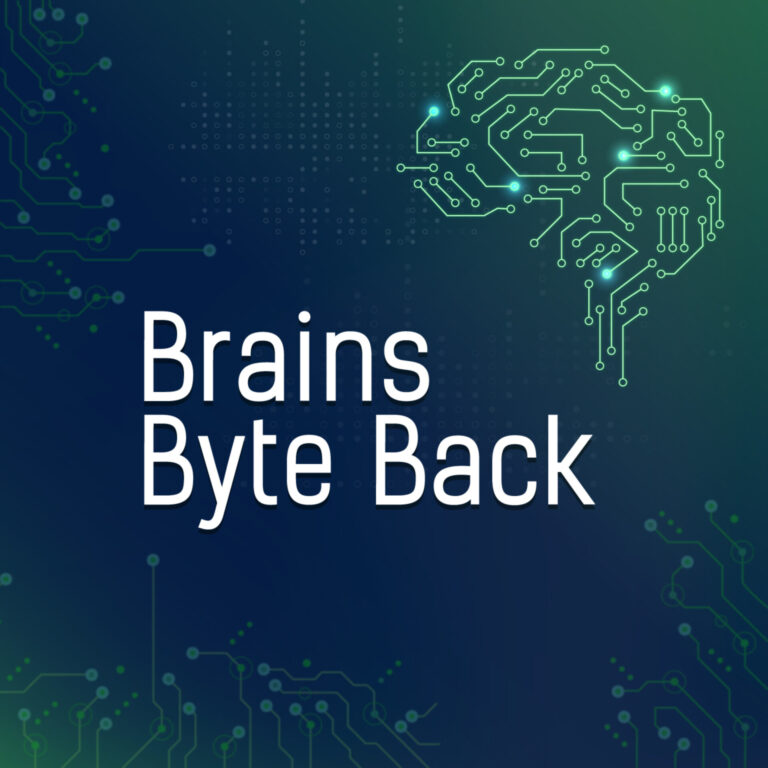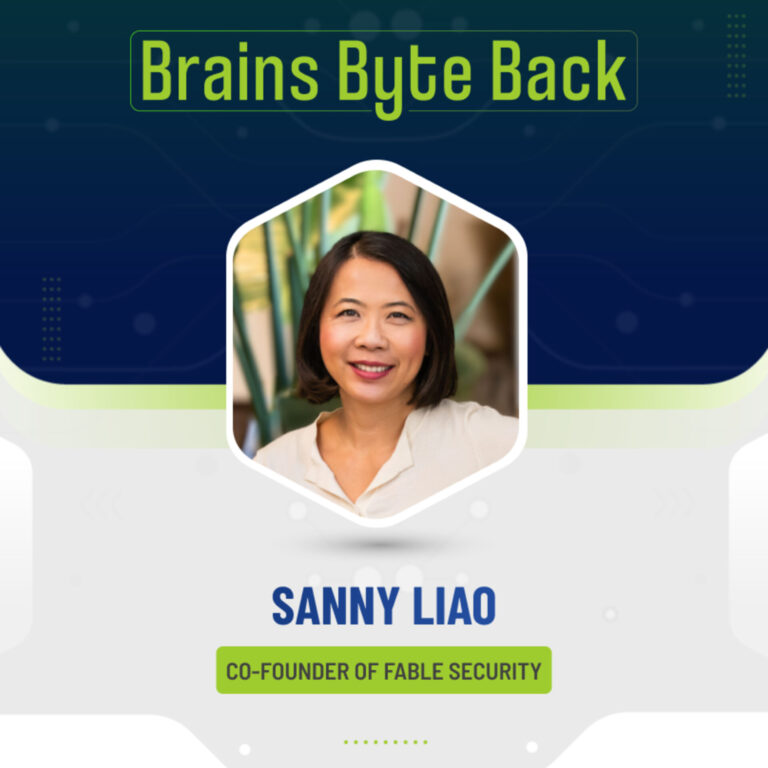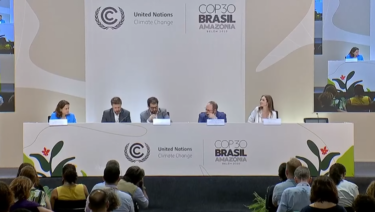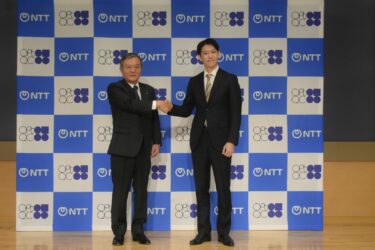In this episode of Brains Byte Back, we welcome 20-year-old inventor and Yale student David Fleming, the creator of Releevum, a groundbreaking self-serve headache relief device. David shares his inspiring journey of overcoming debilitating migraines, his early prototypes at age 11, and his relentless pursuit of innovation.
He is one of an estimated 148 million people in the world suffering from chronic migraines. He joins us to share the journey that led him to create a device poised to help those find relief. As a two-time competitor on American Ninja Warrior, David discusses how his perseverance and passion fueled his entrepreneurial journey, turning a personal struggle into a device designed to help.
We explore his research process, strategy to bring Releevum to market through partnerships with chiropractors, connecting with those finding relief with his product and the lessons learned from launching a crowdfunding campaign
This episode is a deep dive into the intersection of health tech, innovation, and resilience, offering listeners a glimpse into the mind of a young inventor changing lives one prototype at a time.
You can listen to the full episode below, or on Spotify, Anchor, Apple Podcasts, Breaker,, Google Podcasts, Stitcher, Overcast, Listen Notes, PodBean, and Radio Public.
Find out more about David Fleming here
Connect with Brains Byte Back host Erick Espinosa here.
TRANSCRIPT
David Fleming
I’m David Fleming at I’m a 20-year-old inventor of Releevum, a self-serve headache relief device. I am a student at Yale University right now, originally from Boca Ratone, Florida, and I’m a two-time competitor on American Ninja Warrior.
Erick Espinosa
Amazing. David, thank you so much for joining us on this episode of Brains Byte Back. I believe you’re probably one of the youngest entrepreneurs that we’ve had on the podcast. You mentioned that you were 20. Is that correct?
David Fleming
Yeah.
Erick Espinosa
But as they say, age is nothing but a number because you come with an I have an impressive background in terms of what you’ve already achieved as an inventor and a Ninja of sorts. Let’s start with your background. Can you share a little bit about how you came up with the idea for Releevum? Am I pronouncing that correctly?
David Fleming
You are. Yeah. Well, first of all, thrilled to be on the podcast. Really excited to share some of my story. I think it begins a little bit earlier. I’ll just note that at age two, my life became a little bit plagued with health issues because doctors realized that I was legally blind in my left eye and prone to retinal attachment, which meant for the rest of my life, I would never be able to play contact sports, which we’ll come into to play later with my transition to Ninja Warrior. But then by age five, I began experiencing severe migraines. Each one would come with excruciating pain near my temples. I’m usually vomiting 20 to 30 times. I’m on the floor or on my bed in my room with the lights off, completely silent just trying to cope with this pain. Pretty logically, I went to doctors all over the country. I was five years old, and then a couple of years later, seven years old, eight years old, I’m missing 20, 30 days of school. Sometimes the migraines are coming 2-3 times a week, so increasing frequency as I was getting older. I went to doctors in all different specialties around the country.
David Fleming
You are. Yeah. Well, first of all, thrilled to be on the podcast. Really excited to share some of my story. I think it begins a little bit earlier. I’ll just note that at age two, my life became a little bit plagued with health issues because doctors realized that I was legally blind in my left eye and prone to retinal attachment, which meant for the rest of my life, I would never be able to play contact sports, which we’ll come into to play later with my transition to Ninja Warrior. But then by age five, I began experiencing severe migraines. Each one would come with excruciating pain near my temples. I’m usually vomiting 20 to 30 times. I’m on the floor or on my bed in my room with the lights off, completely silent just trying to cope with this pain. Pretty logically, I went to doctors all over the country. I was five years old, and then a couple of years later, seven years old, eight years old, I’m missing 20, 30 days of school. Sometimes the migraines are coming 2-3 times a week, so increasing frequency as I was getting older. I went to doctors in all different specialties around the country.
David Fleming
Typically, the advice would come down to two different options of either living with the pain or taking medication. As you could expect, living with the pain was completely unrealistic. I’m missing school. I’m not able to spend time with friends. I’m not able to grow and be an independent budding adult because I’m spending so much time with my parents and family and canceling social events because I’m always afraid I’ll have a migraine or end up actually having one. There were a ton of concerns with the idea of living with the pain. That was really scary for me. Then the concept of medication initially seemed like a great option because I didn’t have anything else to rely upon. But I realized pretty quickly that a lot of these medications would come with nasty side effects. I would have some that would wipe me out. I’d be in bed for 9, 10 days, just incapable of moving, super tired. Others would come with health issues such as stomach aches, and I would just be on my bed and lots of pain from whatever medication I was taking. Some made me not want to eat anything. There are all types of side effects that would come with these medications, which is really concerning.
David Fleming
That was the start of me wanting to change something. This invention came from my own problem of I’m experiencing pain, I’m having these migraines, and I just can’t find any solution. How can I possibly invent something that can relieve me of my pain and then possibly help others well? I would say that what made that decision very real for me that I needed to solve this and I need to do it myself was in the sixth grade. I missed the last 55 days of fifth grade, and I was kicked out of middle school because I couldn’t meet the minimum attendance environments. I was simply not able to go to school. I went for the first few days in sixth grade, and I just wasn’t able to go back. The migraines were too intense and too frequent for me to stay in school properly. I had to be homeschooled for those years. That was really tough for me. I saw a very bright future for myself, and I just felt like I wasn’t able to capitalize on my full potential at the time because I was really hindered by this constant pain that I was dedicated to relieve.
David Fleming
Then I guess the next step came when I met a chiropractor who was intended to help my own headaches, and unfortunately, it wasn’t very successful in doing that, but it did do one thing. He told me about these suboxybital muscles. These muscles at the base of the skull are connected with some threads through the forehead. Oftentimes, people experience headaches and actually stemmed from tension that builds up in these suboxybital muscles. One thing he did is you just press on these muscles and see if there was any tension. Significant amount of tension. One time I went to him when I had a headache, and I noticed immediately a massive release of tension and pain from my headache just by him pressing his fingers right here. Quickly, though, I realized that all types of issues were trying to do this consistently. You can’t predict in advance when you’re going to have a headache, right? So I can’t know when to schedule the appointments. There’s so many logistical factors here. If I kept going when I got headaches, then the payments would start racking up and it just wasn’t cost-effective either. So I wanted to figure out how I could take this concept that nothing else was working except for one thing, the simplest of them all, pressing fingers on the back of my forehead It was in the back of my head.
David Fleming
Just with that simple concept, one morning, I woke up with the idea that I could try to replicate this myself. Why don’t I just take this concept and put it in my own hands? Immediately, I looked up other options online. I’m like, Oh, great. Well, I’ll just buy one. Nothing. Nothing online. Naturally, necessity being the mother invention, I went to Home Depot, dragged my mom to Home Depot. I recall I’m 11 years old at the time, super young kid. But I was just always trying to find ways to relieve myself of the pain just so significant, so taxing on my life. I saw such a bright future ahead that I knew it was necessary to overcome this obstacle no matter how I need to do it, it was going to happen. I was dedicated. And the way for me, I’m trying my mom home deep at 11 years old, trying to just find some materials. And the first prototype is actually really funny, Erick. I put together two kickstands, like you’d have on a door something like that. I put them to a metal plate. So you can imagine these two kickstands going back and forth.
David Fleming
And the thought was that their rubberized tips would be somewhat comfortable. I would have a little bit of adjustability for different neck sizes, and someone could lay down on it and apply that pressure right to their suboxymal muscles. Quickly, I realized this was, after I created it, not effective, not effective at all, but I love the concept, and I knew I need to continue with it.
Erick Espinosa
The first prototype is never the last, right?
David Fleming
It never is. Yeah. I think that’s something that is necessary for all entrepreneurs to know. Failure is always a start, and then you just keep going until success comes because I was really dedicated to solving this issue no matter how many times it took. For me, that wasn’t a lot of them. I went through over 100 prototypes before I’ve now settled on my finalized design that I’m going to be manufacturing in the coming months in China.
Erick Espinosa
But I imagine a lot of research, too. Were you going back to this chiropractor being like, Hey, I’m trying to come up with how to do this at home by myself with an item? How did that play out? What type of research went into it?
David Fleming
Tons of research. Well, yeah, let me state that first. I’m not the hero of the story. This is not a solo effort. This was very much a team effort. The first thing I did immediately, go back to my chiropractor, fantastic resource. He’s looking to help me. We’re looking to help people. We’re looking to change lives here. This is not about me. Then we did some additional research and we discovered that there were some just significant effects of suboxybital release on relieving headaches. I guess the first step was just further verification that this wasn’t just me. He knew he did this on his patients, and he knew it was effective on a few of them, but we hadn’t really delved into the research papers of how effective this is. Then we did additional research and found that applying pressure to the suboxymal muscles can be remarkably effective for large ranges of people, not just specific types of groups who meet certain criteria in terms of ages, gender. This is for all people, find it very effective. That was the first thing, is to really nail down the science of whether this actually works. And the answer was yes.
David Fleming
We knew we were working with something that actually would be effective. It was just a matter of constructing the best device in order to apply this pressure. He came up with, it sounds simple in hindsight, of course, but the brilliant idea of trying to replicate the thumb. So that was the primary finger that he was using was a thumb in order to apply pressure to this region. And he’s like, why don’t you just replicate the thumb in terms of the density of it, the durometer, in fact, so how hard it is, how soft it is, how long it is, how thick it is, the diameter, everything about the thumb. I was trying to replicate that in the device. Then something that was also key is.
Is he realized, unlike a lot of other people I was talking to, how important adjustability would be in the future. You know, nowadays, you know, about 10 years down the line, there are a few sort of competing products, but none of them are adjustable for different neck sizes. And it’s super interesting how valuable that is. So I’ll find some people where, like kickstand, for example, is a great idea where it just doesn’t adjust that much for different exercises. That was a huge sort of problem with it. And it’s really important, because not only do people have different neck sizea but also within the same person, sometimes in different headaches, they’ll have tension build up in different areas. So we needed some way to make sure that we could really replicate what he does in practice, which is be able to maneuver his hands in different locations to adjust for the particular patient he’s dealing with. So really sort of tailored pressure and tailored service, which, of course, doing you know additional research is very much in line with larger health care trends of having more individualized service, more convenient services, so the product totally falls within some of the science we were seeing some of the larger trends within health care. So I knew is a really exciting space to delve into. And importantly for me, is something I’m passionate about, because I suffered from this, and I knew that I was dedicated to relieving my pain, and once I did so, was able and willing and excited to help others with their pain too.
Erick Espinosa
So It blows my mind that you’re saying this, because I’ve always had the habit of every time I have a headache to put my it’s like instinctual where I put my hand behind my neck, and I start massaging.
David Fleming
Yes
Erick Espinosa
And I never, and for me, it’s like I never really thought about that. I just always felt that this is what provided me relief, right when I started having the headache. So you putting this into words, in the science makes a lot of sense, and when you’re talking about the amount of people that this affects, I looked up numbers here, and I think, andthey’re large numbers, and it’s debilitating. Yeah, it’s debilit because it’s a debilitating thing. And I don’t think a lot of people understands that, when you have constant migraines, like, how much it could really impact your like, day to day life. And it’s estimated here that up to 148 million people in the world suffer from chronic migraines, and it impacts roughly 37 million men, women and children in the United States.
David Fleming
Crazy numbers. Yeah, exactly right, though.
Erick Espinosa
So you realize, you realize there was a market for this. But how do you, how do you get this product out to the world? Because I understand that you started a crowdfunding campaign, and that really kind of helped to take off,
David Fleming
Definitely. So yeah, like I said, the first step was to construct the best product, sort of work with the team to do so, and that took a lot of trial and error. Again, hundreds of prototypes. I would continually test Product Market Fit by developing new prototype, going to some potential customers and seeing what they thought. They’d routinely provide feedback that was immensely helpful. I would incorporate this feedback into additional prototypes and then try to create something that’d be best. Of course, I don’t want to let sort of perfection be the enemy of good, where I’m so focused on getting the perfect product that I don’t get it out fast enough. And that was actually something that I struggle with, and if I had to do it over again, I would have been even more focused on speed rather than perfection. So that is something to sort of note in hindsight, but at the time, I was just focused on getting the right product with, you know, proper feedback from potential customers. And then, like you said, there’s this massive gap with great you have a product, but that doesn’t mean that customers will come to it. What is the sales strategy? Was the go to market strategy in order to sell this to lots of people, and initially I thought that I would just be able to… I was naive. I thought that I would just sort of put it on the market and the people would start buying it. And one way to test this hypothesis was through my crowdfunding campaign. So I started crowdfunding campaign two summers ago, and we end up raising about $30,000 beating our goal of $15,000 actually raising the $15,000 within the first 24 hours. So it had impressive showing at the beginning, and then definitely saw some slower trends throughout the rest of the process, through the 30 day campaign. And something I found was that I was getting lots of clicks, lots of clicks on the site, and then very few conversions. So I think that’s due to one factor, which is just that for healthcare products, people really want it now. People are experiencing pain. They want instant relief. So the idea of doing a crowdfunding campaign where they’re waiting months, perhaps years, for the product, isn’t quite as exciting for them. So I think there’s some sort of structural reason why people weren’t as interested in the crowdfunding. But then I think there’s this other factor, again, going back to my naivety, where I just sort of thought that people would buy it, and I think there’s just much more strategic market placement of my product that was necessary.
So something I found that would be best and it’s crazy how I didn’t think about this at the beginning. I think you just have to try things, and sometimes you fail. That the best placement of my product initially is actually at chiropractic offices. So a lot of chiropractors will sell other products within their office, you know, pillows and massage rollers and stuff like this, something that my product would fit quite well in and, you know, you give it to the chiropractor at some wholesale price, and then they sell it at, you know, some additional price. So they’re making some profit off this. And, you know, and so are you. So it’s sort of a mutually beneficial process. And then the customer is able to get, you know, some awesome product at super convenient location for them. So this is, you know, what I’ve been focused on recently. And I went to some chiropractic conferences, and they have this sort of established vendor, you know, ability. So they have these, all these vendors that are set up, hundreds of them at a chiropractic conference. The most recent one I went to was in Orlando, where there were, you know, 1000s of chiropractors, hundreds of vendors, this massive convention, and I would just have my stand set up. And because I wasn’t actually selling the product, I’m still in the pre ordering phase, I was just getting chiropractors to sign up, saying that they’re interested that, you know, one is that they believe the product works, and then the other is that they would endorse the product that so one, sorry, one was endorsement, and then the other was that they sell in their office. And we found that about over 100 chiropractors end up coming up and signing that they endorsed the product and would sell in their office. So a tremendous showing there. All the chiropractors that end up talking to and recall, they’re, you know, they’re there for different reasons. They’re not always trying to look, you know, the products nearby, but the conversion from people checking out my booth, people actually signing. They’d endorse and would sell in their office., was incredibly high. So we found really strong market fit, product market fit within the chiropractic community. So I think that would be sort of my first foothold, because a lot of times you might want to, and you might be able to expand to all people. Almost everyone suffers from some type of stress, tension headaches, migraines that this device could be extremely effective on, because the studies reveal, not only is this effective on headache and migraine in terms of treatment and prevention, but also just general stress and tension, which is super important. And of course, and additionally, we’re all stressed out. We’re all extra busy. So this is super important that everyone can have the opportunity to try this. But I think the strongest go to market strategy would be within the chiropractic community. And then once I get a strong foothold there, I’m able to expand further.
Erick Espinosa
It’s interesting how you learn that. And I feel like we’re in this time where reviews from people are really like important, like Amazon’s a perfect example of that. But reviews from experts that we trust. So rather than going straight to, I guess, the the people that need it, you go to the people that connect with the people that need it, if you know what I’m saying. And how has the experience been? Because you went from literally being an inventor, you’re figuring out the marketing, you’re doing a startup. Like, there’s all these different factors at play, but what’s the pitching been like. You went to this chiropractic convention, you’re going up, you’re talking to these chiropractors, but like, how like building your confidence to pitch this product?
David Fleming
Yeah. Well, great question. I mean, the first thing that just sort of builds my confidence, fact that it was so successful on me and other people too. And I’ll provide a quick anecdote to that. And this is something I routinely come back to in my life, just reminding me how important this project is to me, and then just what I want to do more broadly, which is make a tangible impact on other people’s lives. And that’s something that really drives me. So there’s this one person who we’re family friends with, and she has migraines pretty frequently, and she knew about my device came over one time, probably an hour or two after the onset of her migraine, and used the device for three to five minutes, which is really all it takes to feel some of its effects. And then, usually after in the next 30 minutes, after use, people will find a remarkable reduction in the intensity of their headache as well. Sometimes they’ll go away completely. And in this case, she tried it for three to five minutes. She went home. I got a call after 30 minutes, and she said, David, it’s gone. I said, What do you mean it’s gone? So you know that the migraine is gone? I said, that’s great. I’m so happy to hear that. So, no, no, you don’t understand, my migraines will last two to three days ssually. These will are debilitating. They ruin my life for several days. I tried your products for three to five minutes and my migraine is gone.
David Fleming
That was incredible, so powerful for me to hear, and that’s exactly what drives me, gives me the confidence to pitch those people that I’m so sure it works. It works on me, it works on other people. The market shows this extremely effective. There’s such a large market for this, so many people suffering from migraines, from headaches, from stress, from tension and my confidence and drive to get this out to the market and sort of build this product up is just exceptional. So when you know the chiropractors and other people come asking about my device, I’m very eager to share what the device is about have them try it out, and just to share my story more broadly, of why I’m doing this, because I think it’s really powerful and relatable for people. Because everyone suffers from, you know, something or another, whether it’s health issues or something, people always face obstacles in their life, and learning about someone who is able to embrace their obstacles, solve their own problem, and then aim to help other people is just really inspiring for a lot of people. So I found that that’s really the reason I’m doing this.
Erick Espinosa
This is what that pod the podcast is all about. Obviously, talking to people like yourself, coming up with ideas to solve real world issues. And I can’t imagine that her story will be the last story. Once this picks up even more, you’ll hear more people, have more people reaching out to you, sharing similar stories,
David Fleming
Definitely, I sure, hope so.
Erick Espinosa
But on top of you running the startup, you mentioned that you’re a student at Yale. How are you balancing both? Like, what advice would you give to somebody that you know is, you know around your age, younger has an idea, wants to do the same focus on their academics while actually balancing a startup?
David Fleming
Yes, I think it’s all about great question. I think it’s all about prioritization and efficiency, right? So I think a lot of people, and this is me too. I mean, I live and learn as well. I was very overwhelmed by lots of tasks, and then I realized to calmly, soak them all in, prioritize which ones are most important, and decide to tackle those first. So there’s that which component which is really interesting. And then also on efficiency, I realized that there’s some tasks that require perfection, or near perfection, and the other ones that don’t that are just sort of completion based. Just get it done. Some assignments in school, I just want to get it done. I just go in the library as efficiently as possible, complete it. And then there’s some other things, like the messaging or pitching of my product that requires near perfection. I want to get as close as possible, and I shouldn’t be focused on efficiency in that process. I should be focused on doing my best work. So I think knowing what’s prioritized, what not prioritize, and when to be efficient and when to put more effort into things is probably the most valuable thing I’ve done for myself. I also, you know, very, very rarely check social media. Don’t check my phone off and, you know, I’m an alarm clock, so that instead of checking my phone every morning or every night, I’m just sort of focused on, focused on life, my own thoughts, meditation a little bit. So that’s really what’s kept me going, able to manage all the tasks on my plate.
Erick Espinosa
That’s great advice, but I imagine another one of your big achievements. And before I let you go, I wanted to touch on this. Yeah, you mentioned that you were on American Ninja Warriors, and from what I see, you were on it twice.
David Fleming
Exactly.
Erick Espinosa
A little bit about that.
David Fleming
I’d love to so starting at age, you know, eight or so, I began watching American Ninja Warrior and funny enough, I began watching it, you know, from my couch or from my bed when I was suffering from migraines. And it was really exciting show, I mean, just, you know, great show. Who can’t love it. But one of the things that really stood out to me was the stories. People would conquer obstacles, not only on the course, but off the course. Such inspiring stories, so exciting people, you just want to see them win. You want to see them succeed. And I always loved that show. Like I said before, I wasn’t able to participate in contact sports because of my eye and it was always searching for some sport to do. Because of my migraines actually, when I came into high school, I was four feet, 11 inches and 75 pounds, Very, very small, and I was just not well suited at all for any of the high school sports. A lot of my high school sports are, you know, very demanding, very high level. And I was not a good, not a good choice, to participate in some of those. However, we had an independent study requirement, so we had to take some class or sort of fulfill some athletic requirement, whether through the school or not. And for me, that was rock climbing my freshman year and then sophomore year, I was going to do rock climbing, except that there was a change to the curriculum, or to the requirement in which you had to compete in whatever sport you were doing. And there was a ninja warrior training gym that opened just a year before this this change happened in my hometown, and I went to the gym, found it was so cool. I sucked at the beginning. I was terrible. I couldn’t do a single obstacle, but I found it so fun, so thrilling. And love to change. Unlike most sports, which are pretty static, this is super dynamic. The obstacles are always changing. The people are getting better. You know, no course is the same, it’s all different. So I love the like dynamism of the course and the and of the community itself.
So there are tons of factors that I just loved about Ninja Warrior. And then when I realized that there were recreational leagues, I decided to start competing, to use my independent study requirement on that. So then I began competing all these recreational leagues my sophomore year of high school. End up being top 50 in the country by the time I was a senior in high school.
Erick Espinosa
Wait, like leagues that are like, American Ninja Warrior?
David Fleming
Yeah.
It’s funny that you say this because I didn’t even know that existed, because every time I saw this show, I was like, this looks like so much fun. Like, find a gym that has this like, because everybody’s story is usually like, I’m a rock climber or I’m a gymnast. But I never see the people that are like, Oh, I I’ve, like, literally trained, jumping up on walls and doing the similar obstacles. I think that’s awesome.
Erick Espinosa
It’s so yeah, so interesting. But with the popularity of the show, then all these local gyms, someone had this idea of, oh, wouldn’t that be cool if we built a gym where people could try it across the country, and then each gym would host their own little competition. So I would go around the country, compete in these recreational leagues. End up doing really well, having a ton of fun, and then knowing that no one and no Ivy League student had ever competed on American Ninja Warrior when I got into Yale, I knew it was the perfect timing, because it’s not only about the competition aspect, but also about the story, and going from someone that was kicked out of middle school to someone that was end up being at Yale University when most selective universities entire world, I knew was an additional layer to my story that’d be really inspiring for people and work great for TV. So knowing this, I decided to apply, and out of over 100,000 applications, they only chose 250 people, which is for reference, less than a 10th percent of what Yale’s acceptance rate is.
Wow.
David Fleming
I ended up being one of those people remarkably gain on the show, and then competed the following season as well, and look to compete in future seasons. An incredible experience, so powerful for me after watching this show from my bed because I was so sick, to being on the show and inspiring others in the same position I was in is an incredible full circle story. It makes me really proud.
Erick Espinosa
David, your family must be so proud. I’m excited to see what’s in store for you next, because you’ve already done so much. I’m sure you’ll continue to achieve great things. If somebody’s interested in reaching out to you and connecting with you, how could you do that?
David Fleming
Several ways. My Instagram is David Flem. I have my LinkedIn profile too. If you just search David Fleming, should be able to find me. My email is [email protected]. So those are three primary ways.
Erick Espinosa
Thanks for joining us on this episode, David.
David Fleming
Thank you so much for having me.
Disclosure: This article mentions a client of an Espacio portfolio company.
